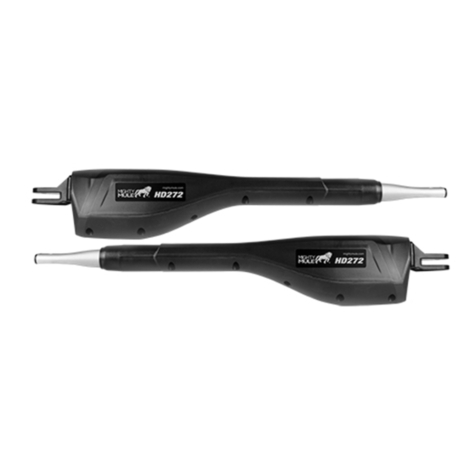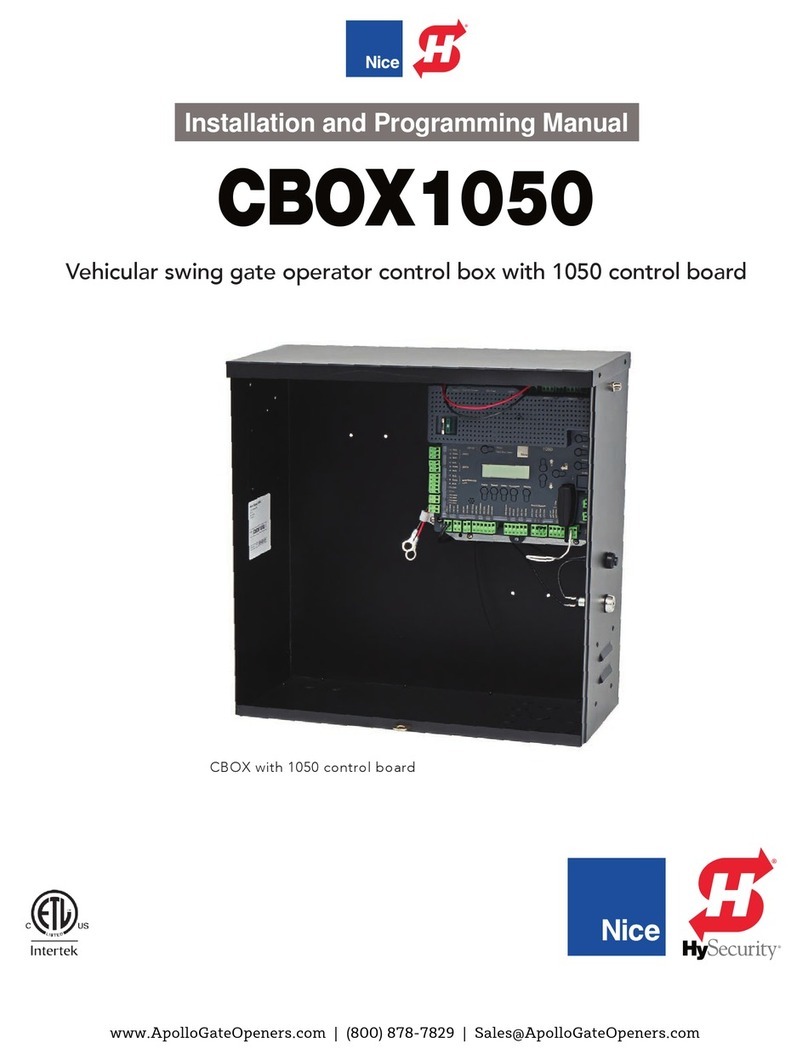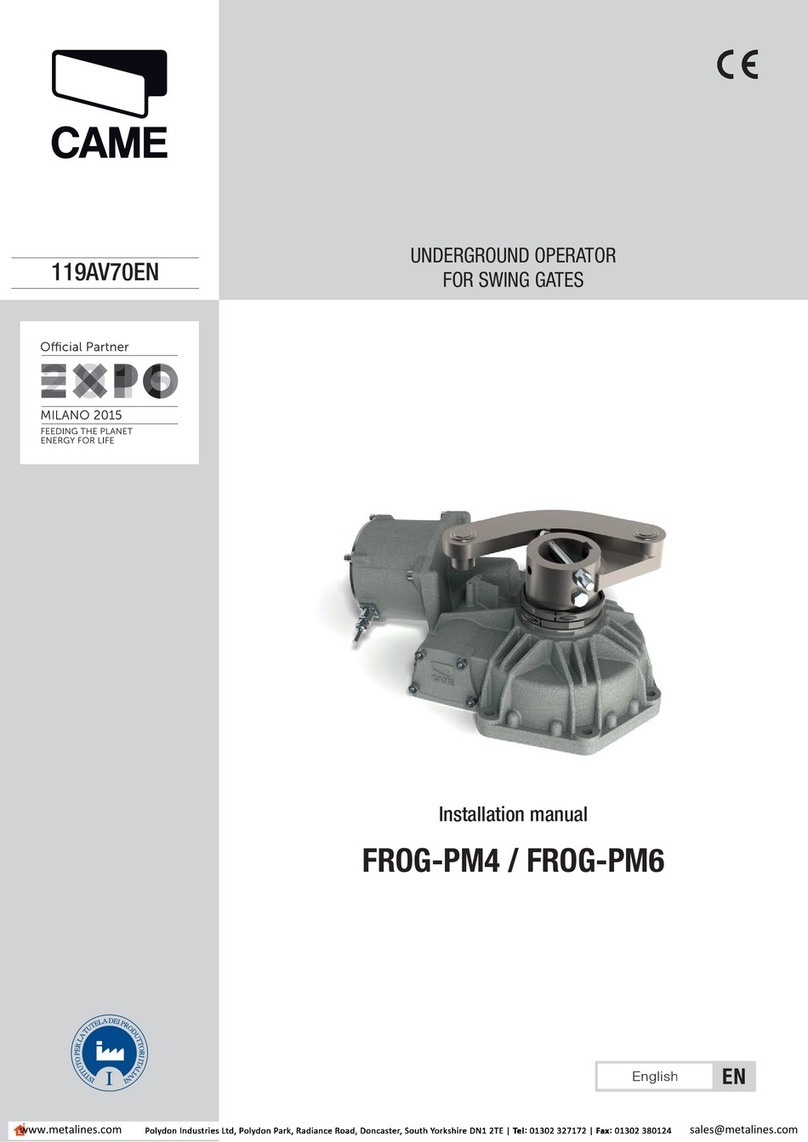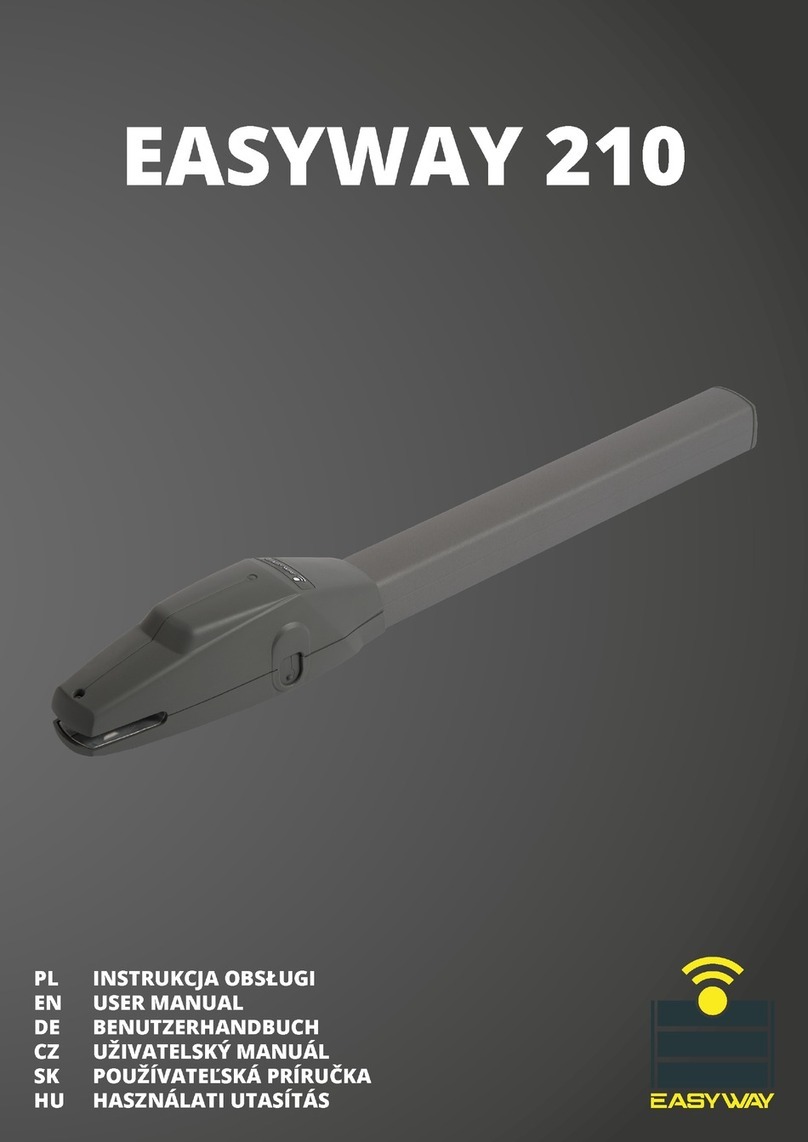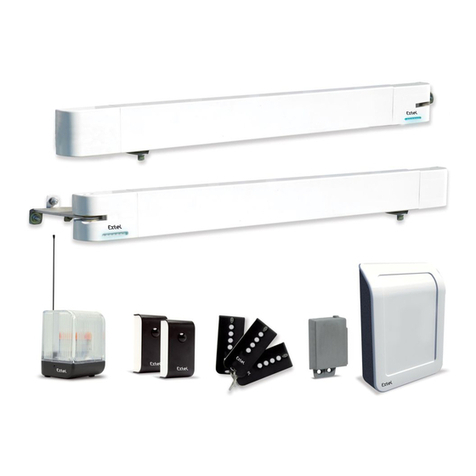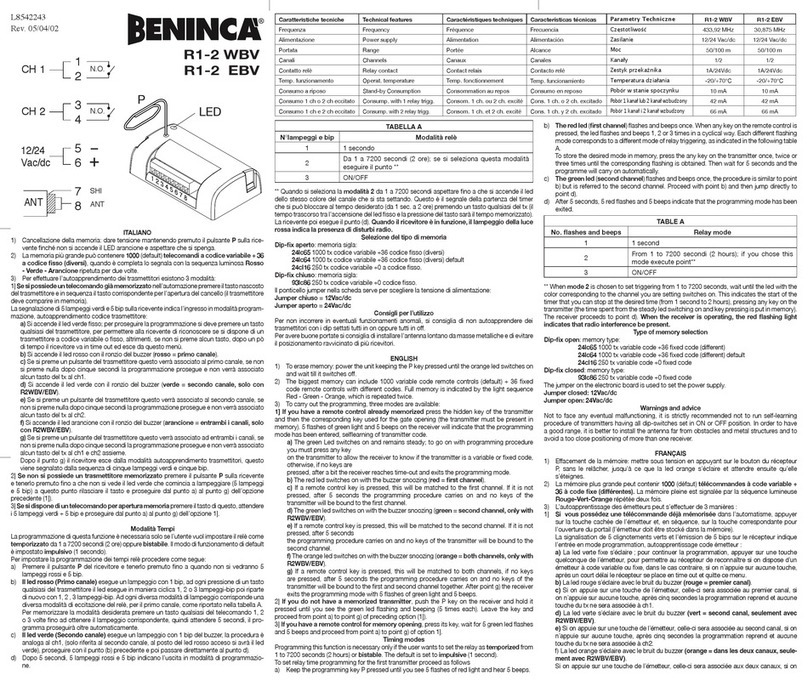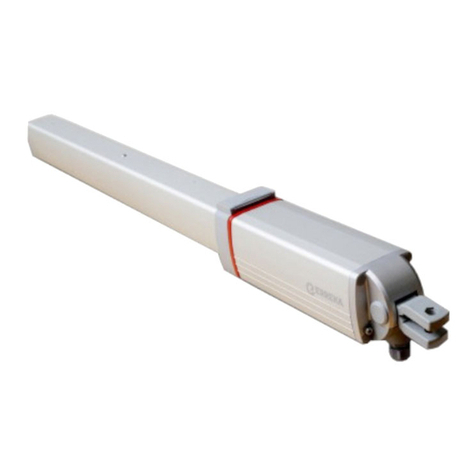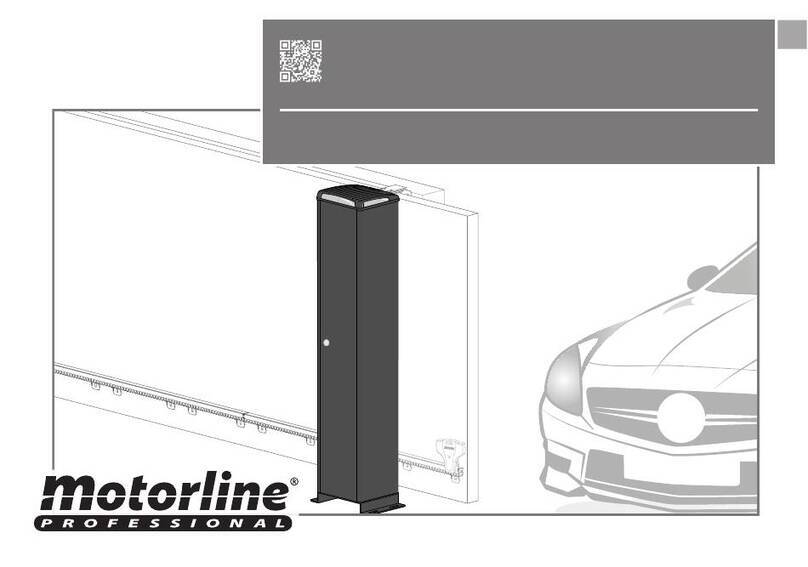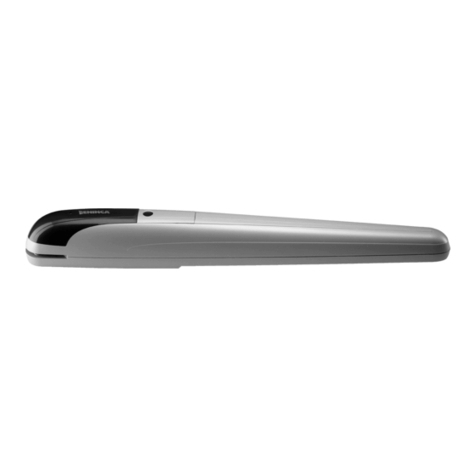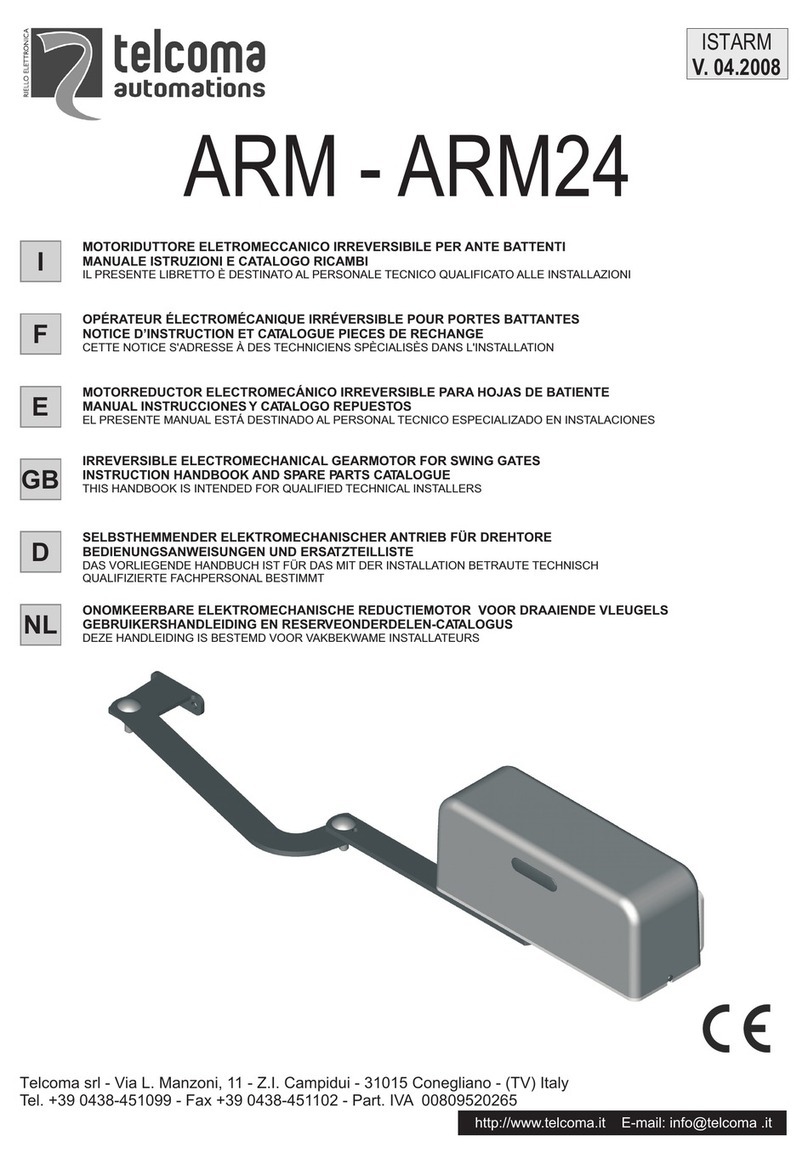
3. ZALECENIA I OSTRZEŻENIA DOTYCZĄCE BEZPIECZEŃSTWA
- Monter powinien stosować się do następujących przepisów: ustawa 46/90, dyrektywy 98/37/CE, 73/23/CEE,
89/336/CEE z późniejszymi zmianami. Powinien ponadto odwoływać się do norm zharmonizowanych EN
12453 i EN 12445.
- Podczas montażu należy zawsze przestrzegać ostrzeżeń zawartych w instrukcji, dotyczących podłączania,
regulacji i testowania fotokomórki. Producent nie ponosi odpowiedzialności za szkody i uszkodzenia ciała
spowodowane nie zastosowaniem się do zaleceń bezpieczeństwa zawartych w instrukcji.
4. TESTY
Automatykę, może przetestować osoba o odpowiednich kwalifikacjach pod nadzorem zawodowego mon-
tera. Dla każdego urządzenia z fotokomórką należy wykonać poniższe kontrole zgodnie z normami EN
12445 i EN 12453:
a) Sprawdzić, czy nie występują zakłócenia z innymi urządzeniami.
b) Odłączyć zasilanie fotokomórek od centralki i sprawdzić czy wystąpił stan alarmowy.
c) Podłączyć zasilanie tylko do odbiornika i sprawdzić czy wystąpił stan alarmowy.
d) Podłączyć zasilanie również do nadajnika i sprawdzić czy wystąpił stan aktywny.
e) Przeciągnąć przewód cylindryczny o średnicy 5 cm i długości 30 cm przez oś optyczną łączącą dwie fotoko-
mórki. Wykonać powyższy test najpierw w pobliżu nadajnika, następnie w pobliżu odbiornika i w końcu w
połowie drogi pomiędzy nimi.
UWAGA: Po przetestowaniu automatyki nie należy już zmieniać ustawionych parametrów. W razie ewentual-
nych zmian ustawień (np. zmiana wartości napięcia), należy ponownie wykonać wszystkie kontrole przewi-
dziane przez test i normę EN 12445.
5. KONSERWACJA
Fotokomórki nie wymagają szczególnych zabiegów konserwacyjnych, ale konieczna jest konserwacja progra-
mowa wykonywana przynajmniej co 6 miesięcy, w ramach której należy:
- Odłączyć zasilanie automatyki przed rozpoczęciem prac związanych z konserwacją i czyszczeniem.
- Wyczyścić zewnętrzną obudowę i soczewki oraz przetestować urządzenie zgodnie z opisem w rozdziale 4.
TESTY.
- Sprawdzać często instalację w celu wykrycia ewentualnych śladów zużycia i uszkodzenia.
6. WYCOFANIE Z EKSPLOATACJI
- Fotokomórka jest wykonana z różnych materiałów, wymagających różnych sposobów postępowania pod-
czas wycofywania z eksploatacji. Należy odwołać się do przepisów obowiązujących w kraju przeznaczenia
urządzenia.
- Wycofaniem z eksploatacji może zajmować się personel posiadający odpowiednie kwalifikacje.
